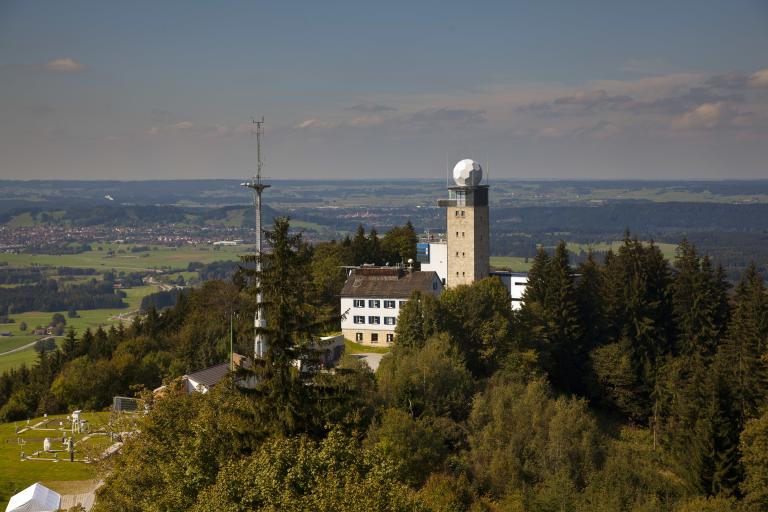Nine resolutions on WMO Earth system observation and prediction approved by EC-78
The Earth system observations and predictions resolutions presented by INFCOM-3 were all approved by the 78th session of the WMO Executive Council (EC-78). These resolutions primarily focus on the WIGOS-WIS-WIPPS, which pertain to Observation, Data Management, and Modelling. Additionally, they cover Space Weather activities and Centennial Observing Stations, all of which are crucial components of the WMO Infrastructure.

WIGOS, GBON and SOFF
EC has adopted all amendments to the Manual on WMO Integrated Global Observing System (WIGOS). Key changes include the addition of Space Weather observing systems in WIGOS, provisions for operating instruments reliant on radio spectrum, updated climate monitoring principles of Global Climate Observing System (GCOS), and updates to Global Basic Observing Network (GBON) and Regional Basic Observing Network (RBON) provisions. Additionally, WMO core and recommended satellite data for numerical weather predictions and DAYCLI reporting practices were included.
Regarding GBON and the UN Systematic Observations Financing Facility (UN-SOFF), the EC focused on policy-related aspects identified at INFCOM-3, urging Members to improve observations and data sharing per GBON technical regulations. It encouraged Members to contribute to UN-SOFF to meet demands and requested the UN-SOFF Steering Committee to consider expanding its coverage to include marine and land-based GBON stations. EC also recommended UN-SOFF to consider building a joint mechanism with INFCOM for Member feedback from beneficiary countries and peer advisors. During the discussion, Members also emphasized supporting middle-income countries in maintaining GBON stations and highlighted how UN-SOFF investments in data sharing could unlock more data than required under GBON.
WMO Information System (WIS)
WMO is transitioning its global data exchange system from WIS 1.0 and the Global Telecommunication System (GTS) to WIS 2.0 between 2025 and 2030. This transition supports the WMO Unified Data Policy and GBON, improving worldwide access to and exchange of critical meteorological and hydrological data. EC approved technical regulations and measures to facilitate this transition to WIS 2.0. WMO provides clear guidance, open-source software tools (“WIS2 in a box”), and capacity-building initiatives to enhance Member countries’ readiness. The transition to WIS 2.0 will strengthen global data exchange, improve access to critical Earth system data, and support better decision-making in the face of climate change and other environmental challenges.
Additionally, EC adopted amendments to the Manual on Codes (WMO-No. 306), marking a significant change in meteorological data exchange. WMO now recommends using Binary Universal Form for the Representation (BUFR) of meteorological data, discouraging the use of Character form for the Representation and Exchange (CREX) of data and discontinuing updates to the CREX tables. This decision aligns with WMO’s long-term goal of improving Earth system observations and predictions by modernizing data exchange formats. By promoting the use of BUFR and embracing newer alphanumeric formats, WMO aims to enhance data interoperability, reduce processing overhead, and improve the accuracy and timeliness of weather forecasts and warnings.
WMO Integrated Processing and Prediction System (WIPPS)
EC endorsed the INFCOM’s decision to improve WIPPS, a global network of operational centres providing analysis and prediction products. This is intended to better meet user requirements, support the Early Warnings for All initiative (EW4All), and align with the WMO Unified Data Policy. This decision will significantly increase the amount of core data from World Meteorological Centres, offering higher temporal and spatial resolution products, as well as some impact-based indexes and a new set of tropical low/cyclone vortex variables. It also includes the endorsement of 11 new WIPPS Designated Centres and five new WIPPS activities. These activities include global climate reanalysis and coordination, vegetation fire and smoke pollution forecasts, marine emergency response and global storm surge prediction, thus expanding support to more user communities to enhance their services.
Additionally, EC requested INFCOM, in collaboration with SERCOM, to conduct a pilot study to establish a new WIPPS activity focused on global riverine flood prediction. This will take into account contributions from non-traditional sources to meet user requirements. The goal is to ensure all Members have access to global flood prediction products and to better support global challenges such as UN-EW4All. This will require combined efforts from the public and private sectors. Even though floods are recognized as a priority hazard, global riverine flood prediction products are not yet available through WIPPS. These products are generated by NMHSs, partner organizations, and non-traditional sources like private sectors and non-partner international organizations.
Space Weather
EC adopted a Four-year Plan for WMO Activities related to Space Weather (2024-2027) and tasked INFCOM-3 to lead its implementation. This plan addresses the three main pillars of the WMO Infrastructure: observing infrastructure, modelling and prediction, and data exchange. Furthermore, it seeks to advance the capabilities of Members to provide valuable services to various economic sectors that are prone to threats from Solar eruptions and consequent Space Weather phenomena.
Space weather phenomena, triggered by events occurring on the Sun and in interplanetary space, can affect the Earth’s natural environment on both regional and global scales. These phenomena can significantly impact several technologies and services, including HF radio communication, satellite communications, Global Navigation Satellite Systems (GNSS), the electrical power grid, and spacecraft operation. To successfully mitigate these detrimental impacts of space weather, extensive observational capabilities on Earth and in space (from the Sun to the Earth) should be accompanied by numerical modelling capabilities representing both the phenomena and their technological impacts. WMO’s efforts to integrate Space Weather within its activities are drawing on the analogy with operational weather services.
Centennial Observing Stations
EC has decided to recognise 49 meteorological, hydrological and marine observing stations as WMO Centennial Observing Stations. These observing stations and their observational data are seen as a climate heritage, providing long-term, high-quality climate and environmental records for current and future generations.
In the last eight years, WMO has already recognised 406 observing stations from 71 countries representing all continents (incl. Antarctica). EC Members have expressed appreciation for this initiative, which promotes a core activity of NMHSs and national partner institutions in maintaining long-term observing stations.

